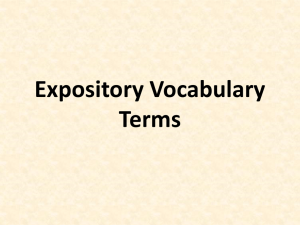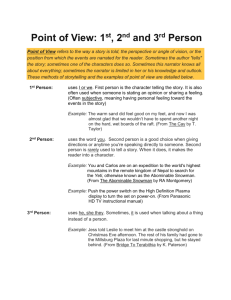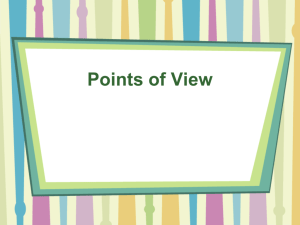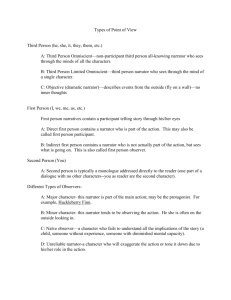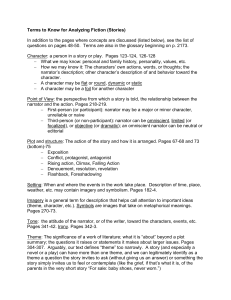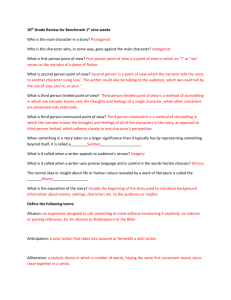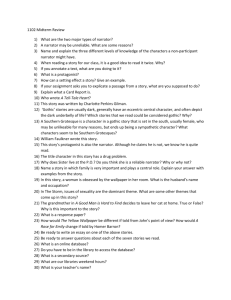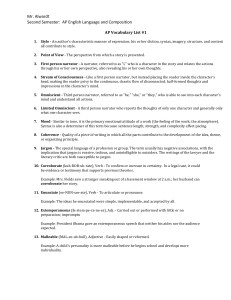Analyzing Point of View: First, Second, and Third Person
advertisement
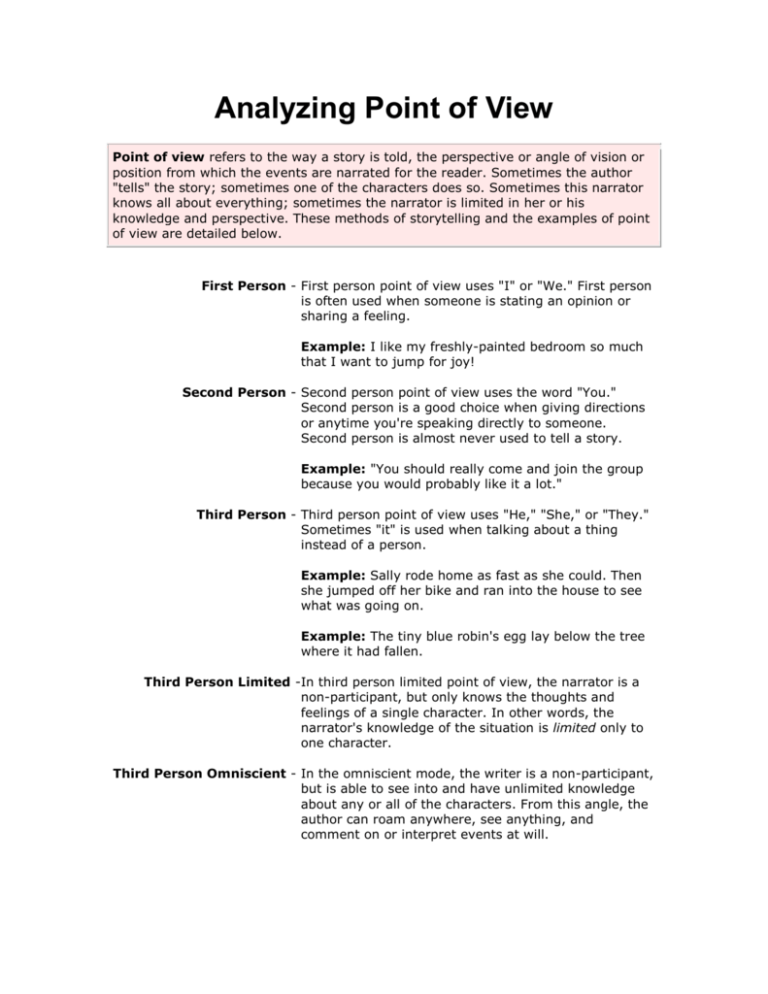
Analyzing Point of View Point of view refers to the way a story is told, the perspective or angle of vision or position from which the events are narrated for the reader. Sometimes the author "tells" the story; sometimes one of the characters does so. Sometimes this narrator knows all about everything; sometimes the narrator is limited in her or his knowledge and perspective. These methods of storytelling and the examples of point of view are detailed below. First Person - First person point of view uses "I" or "We." First person is often used when someone is stating an opinion or sharing a feeling. Example: I like my freshly-painted bedroom so much that I want to jump for joy! Second Person - Second person point of view uses the word "You." Second person is a good choice when giving directions or anytime you're speaking directly to someone. Second person is almost never used to tell a story. Example: "You should really come and join the group because you would probably like it a lot." Third Person - Third person point of view uses "He," "She," or "They." Sometimes "it" is used when talking about a thing instead of a person. Example: Sally rode home as fast as she could. Then she jumped off her bike and ran into the house to see what was going on. Example: The tiny blue robin's egg lay below the tree where it had fallen. Third Person Limited -In third person limited point of view, the narrator is a non-participant, but only knows the thoughts and feelings of a single character. In other words, the narrator's knowledge of the situation is limited only to one character. Third Person Omniscient - In the omniscient mode, the writer is a non-participant, but is able to see into and have unlimited knowledge about any or all of the characters. From this angle, the author can roam anywhere, see anything, and comment on or interpret events at will.
